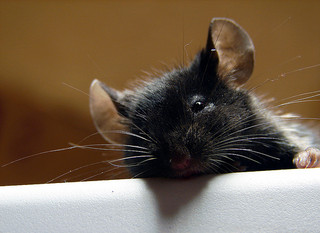Pest-proofing Doors to Keep Pests Out
By Chris Williams on July 18, 2014.

Seal doors gaps and other openings in your home to keep mice and other pests out.
The pest control business has changed a lot over the past few decades. Our work now is just as much about pest prevention as it is about pest control. And a big part of pest prevention is what we call pest exclusion which simply means eliminating the openings and other means that pests use to get into homes and other buildings.
Exterminators Can Be “Structural Engineers”
Pest exclusion, or pest-proofing if you prefer, uses lots of different techniques and materials that all work toward the same goal of keeping pests out by making your home pest-proof. Screening, weather-stripping, caulking, and reinforcing or replacing damaged areas, are all examples of methods we use.
Not all exterminators make pest exclusion part of their business. At Colonial, we pride ourselves on our pest exclusion work. And we back that pride with a guarantee. We consider pest exclusion to be a priority and part of our total pest management package.
Let’s Start With the Doors
If we were only able to pest-proof one area in a home, it would be the doors. Doors allow people in and they allow pests in. You probably think those mice are sneaking into your home through a tiny unseen crack, but truth is they are likely using the door. I’m not necessarily talking about leaving a door open to mice, but about all the gaps on the sides, at the bottom, and in the corners of your doors. If your doors don’t have thresholds or sweeps at the bottom and weather stripping at the sides, you are letting pests inside. You might as well put out a Welcome mat!
The garage door is usually the biggest offender. We forget that the garage is part of our home and that once in the garage, pests can easily get into the body of the house. There is almost always a space at the bottom corners of a garage door where the door seal doesn’t quite meet the side frame. Rubber garage door gaskets don’t last forever and rarely are replaced. See “Maintain Your Garage Door to Keep Mice Out” for information on how to pest-proof your garage.
Check Your Doors for Light Leaks and Gaps
One way to check the tightness of your door seals is to stand in a dark room or garage and look at the closed door with bright sunshine on the other side. Or, at night, have someone on the outside shine a flashlight on all edges of the door while you observe from inside. The light leaks around the door frame will show you where there are spaces large enough for a mouse to enter.
Another positive aspect of pest-proofing doors is that you are also weather-proofing, sound-proofing, and insulating – at the same time that you are stopping pests. Energy costs are lowered by maintaining the indoor temperature and keeping the weather and drafts out. Noise is reduced from outside to inside and from room to room.
photo credit: Furryscaly via photopin cc